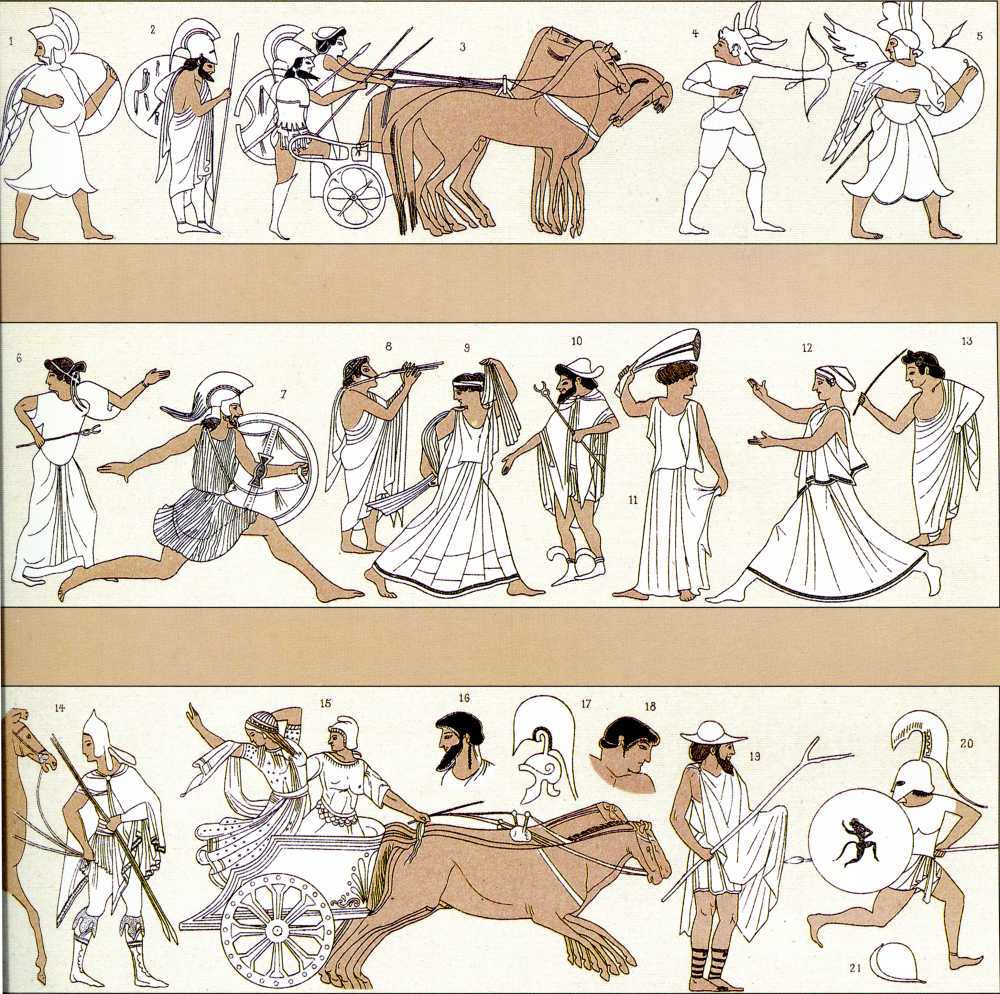
Amazon Audible Gift Memberships

ANCIENT HISTORIANS, SUCH AS HERODOTUS, believed that the Etruscans were of Asiatic origin, and the Etruscans themselves claimed in their annals that they came from Lydia. Nothing is certain, however, apart from the fact that they occupied a part of Tuscany in North West Italy.
The Etruscans left tombs, paintings, sculptures, furniture, vases, jewellery and many other artefacts that make up our main source of information about them.
Striking analogies can be drawn between the Etruscans and the Lydians, particularly in the case of the tombs. But although the genius of the Hellenic influence is quite apparent in these works of art, archaeologists claim to be able to discern numerous qualities which would appear to reflect the Etruscans' Asiatic origin.
1 & 5 Amazons retiring from battle. One is wearing a feathered helmet while the other has a helmet with a double crest. Their tunics are pleated in scalloped folds.
2 & 3 Achilles with his chariot of war, driven Automedon, his charioteer, and accompanied by Patroclus. This picture is taken from a description in The Iliad.
4 A Persian wearing the winged helmet of Hades, which made the wearer invisible, and carrying a Scythian bow.
6 Iris, messenger of the gods, carrying her emblem, the caduceus.
7, 9, 11 & 12 Helen and her young girls pursued by Menelaus. The costumes are completely Greek, while the vigorous depiction of movement is the essence of Etruscan style.
8 A musician playing the double flute. The Etruscans introduced this instrument to Italy at the same time as the bronze trumpet.
10 Mercury, messenger of the gods, with a beard, a belted tunic and small boots.
13 The master of a gymnasium.

14 A warrior, wearing a pointed helmet similar to those worn in Thrace. The shape of this defensive armour recalls the Mongolian or Circassian helmet. It seems to have been covered with a felt bonnet, a practice common when the warrior was not in battle. The subject here wears laced boots known as Tyrrhenian boots.
15 A chariot pulled by a team of four. It is driven by a Phrygian and its wide, studded wheels with eight spokes are exactly like those on the Assyrian chariots in the sculptures at Nineveh.
16 & 18 Examples of men's hairstyles.
17 A helmet with a long, swaying crest.
19 A typical peasant, dressed in a tunic and cloak. His low-crowned, broad-brimmed hat is called a petasus, and his leggings are straps of leather wound around his calves. He is carrying a staff with a forked end, the mark of the labourer.
20 An Etruscan warrior wearing a Boeotian helmet with a raised crest.
21 A helmet or bonnet.